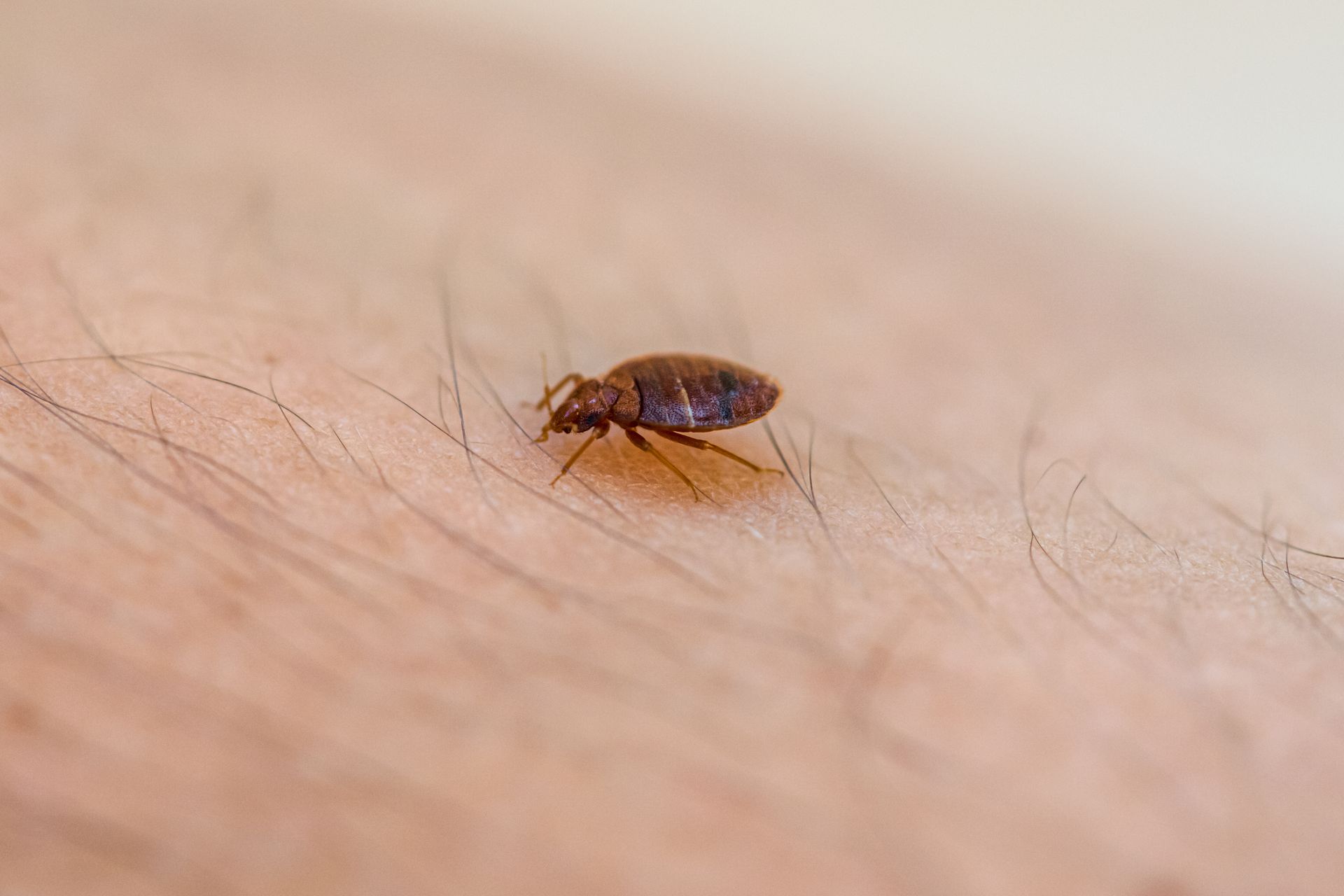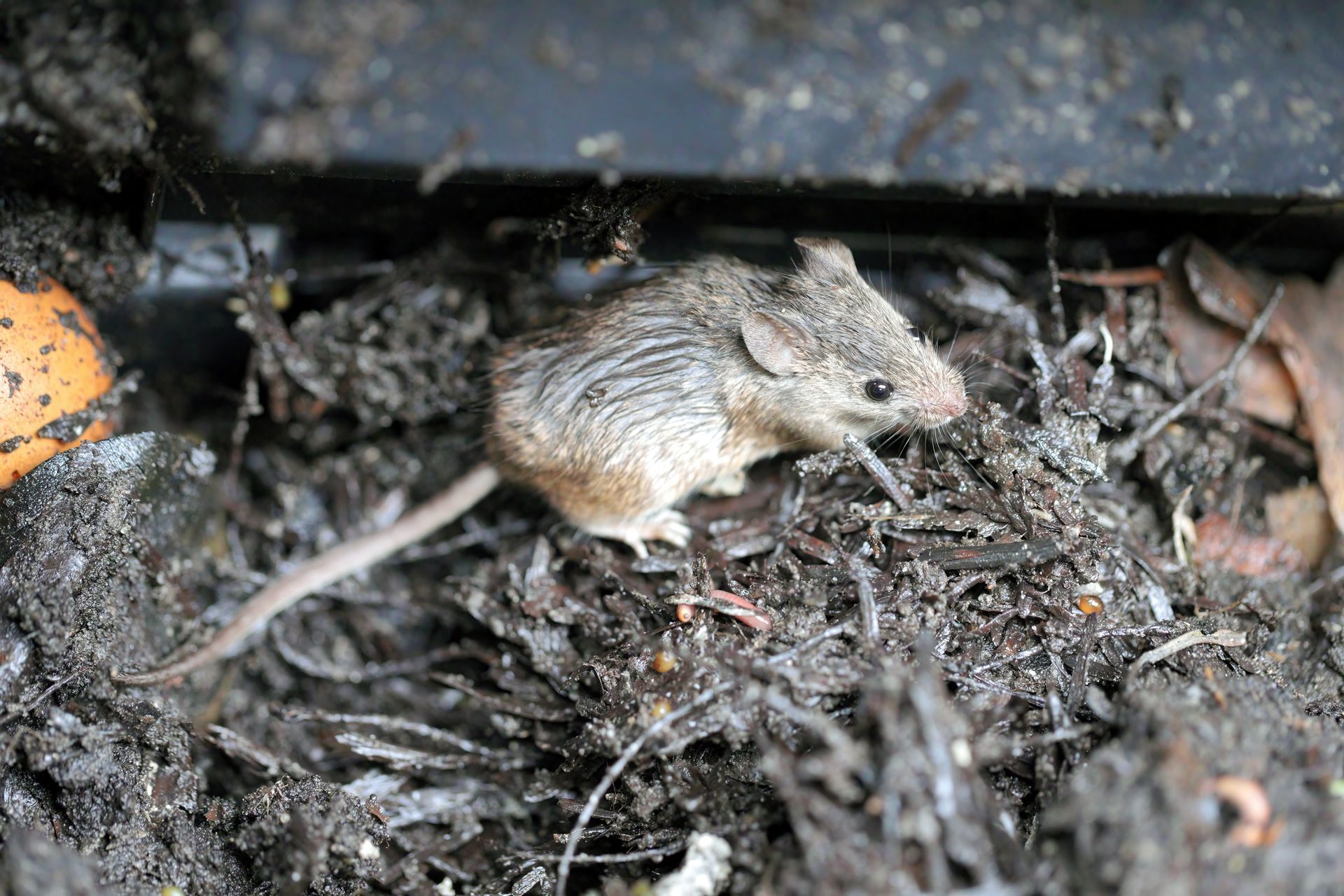Do Bed Bugs Fly or Jump from Person to Person?

Contrary to some misconceptions, bed bugs are incapable of flying or jumping. They are wingless insects that once had front wings, but those wings have evolved into vestigial structures over time which renders them non-functional for flight. Instead of flying or jumping, bed bugs primarily move by crawling around. Their ability to spread from one location to another is primarily attributed to their ability to discreetly hitchhike on someone or in their belongings. They can easily crawl into luggage, attach to clothing, or hide in second-hand furniture which makes them opportunistic travelers. It's essential to be vigilant because their mobility, combined with their small size, allows them to hide and infest new areas without detection.
Do Bed Bugs Have Wings Capable of Flying?
Bed bugs, despite having structures known as wing pads or hemelytral pads, are not capable of flight. These pads are located just behind the insect's head and are remnants of what were once wings in their evolutionary past. Over time, as bed bugs adapted to their environment and lifestyle the need for wings diminished which caused them to evolve into the wingless state we know today. These vestigial wing pads emerge during the transition from the 5th instar nymph stage to adulthood. While they can move these pads, they cannot use them for flight.
Then What Flying Bugs Look Like Bed Bugs?
There are other flying bugs that look similar to bed bugs which can cause confusion and panic. Several of these bugs are in the beetle family because some beetles and bed bugs have similarities in appearance and size. The most common suspects are drugstore beetles and carpet beetles due to their presence inside of households. Drugstore beetles are brown and oval and just a little smaller than bed bugs. The key difference between drugstore beetles and bed bugs is that they are attracted to light, and they are commonly found in areas like bathrooms, kitchens, and offices. Bed bugs, on the other hand, are active at night and are found mostly in bedrooms. Carpet beetles vary in color but one species in particular shares a reddish-brown shell that is similar to the coloration of bed bugs. These carpet beetles have a shiny exoskeleton that contains wings, but it is important to remember that if a bug is seen flying, then it is not a bed bug.
Do Bed Bugs Jump from Person to Person?
Bed bugs do not possess the ability to jump like fleas. They do not have powerful back legs that can propel them long distances. Instead, bed bugs have developed 6 legs with gripping pads that allow them to crawl across most surfaces. While fleas and bed bugs both feed on blood meals from human hosts, their appearance differs significantly. Bed bugs are much larger than fleas and are easily seen with the naked eye. Fleas on the other hand are tiny and not as easily detectable due to being as small as a grain of sand. Fleas will crawl from around someone’s bed and feed on them at night while fleas tend to jump on people as they pass by and feed on the exposed skin around their ankles. Bed bugs can be picked up and transported but they cannot jump from person to person. Since bed bugs’ movement is limited to crawling, they can be caught using traps at the feet of a bed frame. These traps act as sinks with smooth surfaces that bed bugs cannot crawl up which prevents them from reaching their intended target.
How Do Bed Bugs Get Around?
Bed bugs primarily move by crawling and eventually settle close to where their human hosts sleep. Typically, bed bugs establish their nests in places like mattresses, box springs, and bed frames which is why they're named "bed bugs." However, if their food source moves, these pests will actively search for a new host to feed on. They can navigate through wall outlets to enter wall voids and subsequently spread to other rooms or apartments. While they don't crawl rapidly, their ability to latch onto items like gym bags facilitates their spread to new locations. It's noteworthy that bed bugs prefer human hosts and are less likely to infest pets. To prevent their spread, it's essential to address infestations promptly and avoid moving from one bed bug infested room to another as this can exacerbate the problem.
How Do Bed Bugs Travel?
Bed bugs, despite their lack of wings and inability to jump, are adept "hitchhikers." They primarily rely on their six legs to crawl, but their most efficient mode of transportation is by latching onto human belongings and being carried to a new location. Items such as luggage, purses, gym bags, clothing, furniture, and even books can inadvertently become vehicles for these pests. This hitchhiking behavior is particularly prevalent during travel with many individuals unknowingly transporting bed bugs into their homes from hotels or other accommodations they stayed at. The bugs can easily hide in mattresses, furniture, and carpets which makes them inconspicuous stowaways. Given their small size and tendency to cling tightly to surfaces bed bugs can spread rapidly without detection.
Can Bed Bugs Climb Walls?
Bed bugs possess the ability to climb walls especially if the surface offers some texture or an uneven coat of paint. While they may struggle with extremely smooth surfaces, they can effectively navigate most typical household surfaces. There have been instances where homeowners in an attempt to deter bed bugs with traps placed at the legs of their beds have observed these pests climbing walls as an alternative route to reach their human hosts. It's essential to consider this climbing capability when implementing preventive measures against bed bug infestations.
How Fast Do Bed Bugs Move?
Bed bugs can move at a pace of approximately three to four feet per minute on various surfaces. While this might seem relatively slow, it's roughly the equivalent of an adult human sprinting. Their speed, which is comparable to certain ant species, enables them to swiftly locate their host, feed, and retreat to their hiding spots without being noticed. This is often done quickly before disappearing within moments. This rapid movement underscores the importance of swift action when dealing with a potential infestation, as they can quickly spread or evade capture.
How Do Bed Bugs Find Their Hosts?
Bed bugs are adept at locating their hosts primarily through the detection of carbon dioxide (CO2) emissions. When humans sleep, the levels of CO2 they emit increase which acts as a signal for bed bugs to become active and move towards the source. Their slow movement is strategic since their primary prey are often in an unconscious state during their feeding times. Moving slowly minimizes the risk of awakening and alerting their host. This methodical approach ensures they can feed without disturbance and retreat safely afterward.
How to Stop Bed Bugs from Moving Around?
To effectively contain and manage a bed bug infestation, it's crucial to remain consistent in your sleeping habits. By continuing to sleep in the same location, an individual essentially acts as "bait" to draw the bed bugs to a specific area. This consistency not only prevents them from spreading throughout the house in search of a new food source but also ensures that any treatments like insecticides or traps are more effective. Exterminators often recommend this approach as part of a comprehensive treatment plan. While the idea of acting as bait might be unsettling, it's worth noting that bed bugs are not significant vectors for diseases. The primary discomfort they cause is itchy bed bug bites and possibly insomnia, but maintaining a consistent sleeping location is critical in managing and eventually eradicating the infestation.
How to Take Advantage of Bed Bugs Inability to Fly or Jump
Taking advantage of bed bugs' inability to fly or jump can be instrumental in managing and eradicating infestations. Bed bug traps and interceptors are particularly effective tools that leverage the bed bugs limitations. Interceptors are specifically designed to take advantage of the fact that bed bugs are unable to climb smooth surfaces and trap them once they find themselves contained in the trap’s basin. These devices are especially beneficial for low-level infestations and to reduce the bed bug population over time. They are also a critical tool in monitoring the progress of bed bug treatments. However, if an infestation appears to be escalating, it's essential to consult a pest control professional for comprehensive pest management. Using interceptors in conjunction with professional treatments can significantly enhance the chances of completely eliminating bed bugs from a given environment.
How to Prevent Bed Bugs?
To prevent bed bug infestations, it's essential to adopt several proactive measures. After traveling, unpack luggage in an isolated area like a garage, inspecting each item for potential bed bugs. All clothing and bedding should be washed in hot water, which can effectively kill both adult bed bugs and their eggs. Regularly washing bedding and blankets in hot water is another preventive step. Additionally, maintaining a clutter-free environment is crucial, as bed bugs are attracted to cluttered spaces that offer numerous hiding spots. By eliminating stacks of boxes, papers, and excess clothing you reduce the potential habitats for these pests and further safeguard your home from infestations. It's also advisable to be cautious and inspect used furniture or other second-hand items before bringing them home.
Contact EcoGuard Pest Management
If you've encountered the distressing ordeal of bed bugs, remember that you're not alone and professional help is just a call away. EcoGuard Pest Management possesses the expertise and tools to address and eradicate these unwelcome invaders and ensure your home returns to its comfortable, bug-free state. Don't let bed bugs disrupt your peace of mind. Reach out to EcoGuard Pest Management today and let our team provide the effective, eco-friendly solutions you deserve.

















